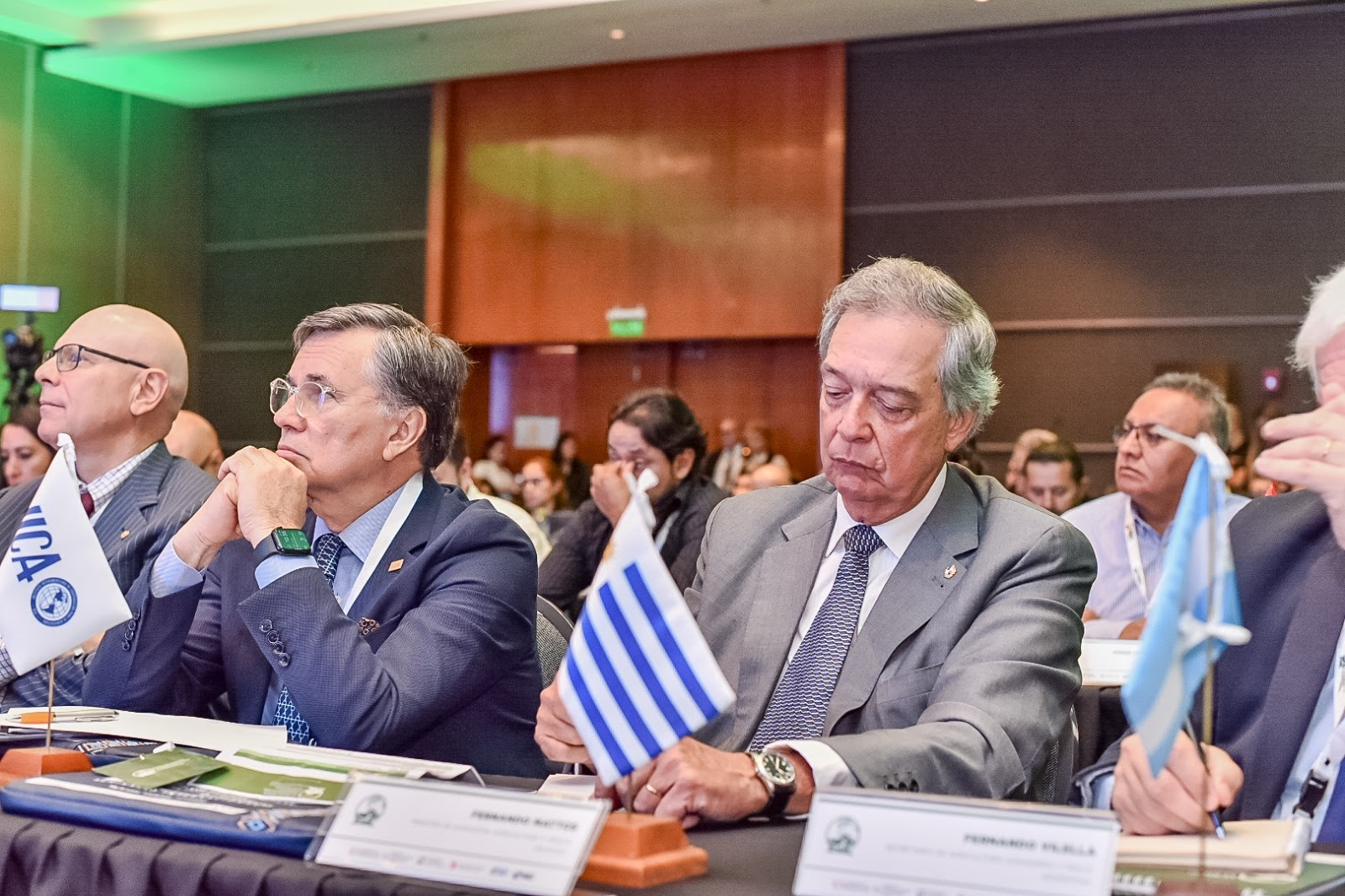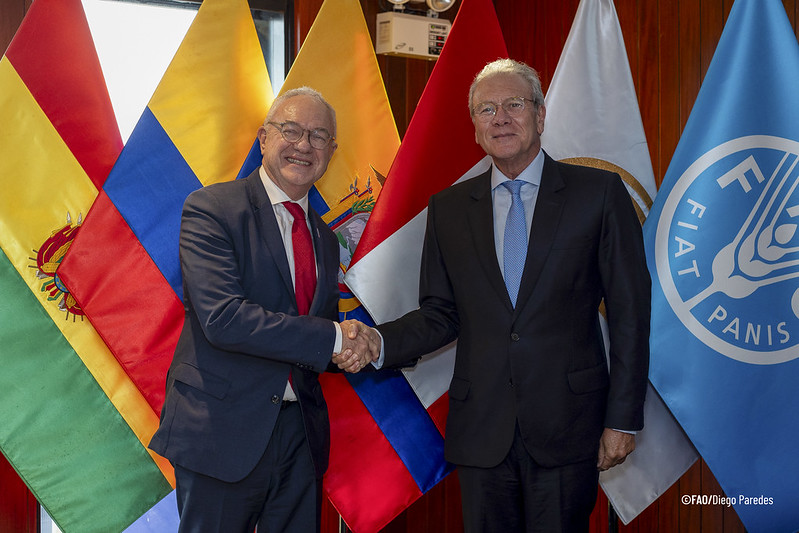A study commissioned by Caribbean sugar producers has recommended a region-wide approach to producing white sugar and urged the enforcement of a tax on most sweeteners imported into the region even as domestic producers highlight extensive tax evasion by importers.
The report by the United Kingdom-headquartered LMC International has underscored the challenges faced by producers in Caribbean Community (CARICOM) countries who struggle to compete with the cheap sugar sourced extra-regionally. As producers push for the application of the Common External Tariff (CET) that should be charged on sugar imported into the region, they have also highlighted that importers utilise various methods to evade the CET and benefit, too, from waivers to the detriment of regional producers.
The issue of applying the 40 per cent CET on refined sugar entering CARICOM has been under the spotlight of late, with the Guyana Sugar Corporation (GuySuCo) and the Sugar Association of the Caribbean (SAC) calling for the enforcement of the tariff. GuySuCo is seeking to produce plantation white sugar to boost its struggling fortunes and it recently said that it and other sugar producers’ groups representing sugar producing countries in the region had discussed applying the 40 per cent CET now only applied for non-regional brown sugar entering the regional market, to all sugars, including white sugars.
However, the Guyana Manufacturing and Services Association (GMSA) recently rejected the calls to apply the CET arguing that refined sugar-dependent companies could be forced to close and jobs could be lost. The local manufacturers have also claimed that white sugar produced here could negatively impact the quality of their products.
However, the January 2019 study by LMC International for SAC has said that regional producers can produce sugar to the standard required by manufacturers. The report, ‘The Substitutability of Plantation White Sugar and Refined Sugar in Industrial Processes’, highlighted the challenges faced by regional producers and outlined potential solutions.
Among other things, it said that small, fit-for-purpose processing plants could be established at existing industrial end user sites or a central facility could be set up within the region. As it relates to producing sugar that meets the standards required by manufacturers, it outlined several options including ion exchange treatment.
“Depending on the quality and stability of the plantation white sugar that is produced in CARICOM, hot carbon treatment or ion exchange treatment are likely to be the most suitable options with ion exchange being favoured if there is a risk of variation in the quality of the plantation white sugar produced,” the report said.
LMC said that several small processing plants be established in sugar producing nations to produce plantation white sugar or a central facility be set up, with Jamaica or Trinidad, where there is an out-of-use liquid sugar plant, likely to be the most suitable location.
“Small, fit-for-purpose processing plants [could be] established at existing industrial end user sites, with CARICOM producers ensuring that they produce plantation white sugars that consistently meet the require parameters,” the study says. It said that another solution “would be to establish a standalone central ion exchange based sugar treatment facility,” which could also have additional equipment modules to deal with sugars that are more difficult to treat or those that have wide variations in quality.
The location of the facility would be driven by scale and logistical convenience meaning that either Jamaica or Trinidad and Tobago would be the most likely suitable location, the report said while observing that there is already a liquid sugar plant in Trinidad, which is not currently in use “but could be brought back into production if the CET was applied to refined sugar imports.”
‘Guarantee’
But before the upfront investments are to be made, LMC said that investors would need to be given a guarantee by CARICOM’s Council for Trade and Economic Development (COTED) that a CET would remain in place at a certain level, for at least a certain specific number of years.
In addition, the report said that COTED would also have to agree that no tariff exemptions would be granted to end-users for imports of crystal sugars of any kind other than icing sugar and pharmaceutical grade sugars, and no leakages would take place in terms of permitting imports of sugar blends, fructose syrups, sugar syrups, blends of syrups and sugar-containing products, among others.
“Again, the intent of these restrictions would be to afford a meaningful level of protection to a dedicated domestic investment that would preserve the sugar industry within CARICOM and which, in its own right, would drive domestic investment and employment,” the report said.
SAC was also told that refined sugar users could still import that sweetener but they must pay the CET.
If its recommendations are implemented, LMC said that the steps would be “a fundamental change to the model of sugar production within CARICOM, focussing on the countries best suited to produce sugar for specific end-use applications, rather than all the sugar producing countries attempting to produce all grades and formats of sugar that address all the applications,” which would be sub-optimal, or in some cases, unfeasible.
And with the implementation of the recommendations, LMC underscored that technical expertise was also an equally important part of the matrix since ion exchange treatment “calls for greater technical skills, experience and oversight.”
Meanwhile, SAC and GuySuCo have highlighted that while the CET is intended to protect and support domestic production, sugar producers are experiencing a significant decline in the value of brown sugar within the region due to extra regional imports at prices that could not be supporting application of the CET.
“There is general oversupply of sugar in CARICOM due to excessive imports, imported under the CET waiver process that permits imports of refined sugar for use by food manufacturers. It is evident that the waiver process is being exploited,” they have outlined in a presentation. It was pointed out that the imported sugar primarily originates from Colombia and Guatemala and is being sold into the CARICOM region at values that are more than 50 per cent less than the domestic markets in both of these countries.
“These imports are damaging and displacing the market opportunity for CARICOM sugar producers in terms of both value and volume. They risk the decline of the CARICOM sugar industry,” it said.
“With low global market prices set to drive sugar producers out of business it is essential that the CARICOM governments and [CARICOM] Secretariat enforce the CET – both for brown and white sugar – in order to shelter the CARICOM producing countries from the trade distorting policies of much larger countries that are depressing global prices,” it added.
The extensive tax evasion that occurs when importing sugar was also highlighted.
According to the producers, it is evident that quantities of plantation white sugars are entering the CARICOM market, either purporting to be refined white sugar under waiver, or simply not paying the CET.
It said that plantation white sugar is produced within CARICOM to a high standard and the imports demonstrate that plantation white sugars are useable within the CARICOM market and that the CET procedures are being circumvented, with the impact of excluding CARICOM producers from their own market.
It was stated that market intelligence has shown a number of ways of CET avoidance.
These include omitting words in the manifested descriptions of the material shipped, and simply noting it as “sugar” rather than “brown”, “raw” or “white” or more detailed descriptions. It was also stated that traders seeking to capture part of the value of the CET, combine CARICOM origin sugars with imported sugar at an equivalent to 27 per cent CET on the full quality and then selling this to final buyers at the equivalent of 40 per cent CET.
It also said that anecdotal evidence from suppliers indicated that some CARICOM governments are not charging CET on brown sugars at all, but are charging a separate levy of around 10 per cent. It also highlighted that traders and food processors apply for CET waivers based on refined sugar volumes that are either not directly linked to industry needs (in the case of traders) or in excess of requirements (in the case of food processors).
Sources at GuySuCo told Sunday Stabroek that the corporation “takes a beating here due to some of the same tax avoidance means” and if GuySuCo is to be sustainable “these issues need to be addressed.”
“Some people at [the Guyana Revenue Authority] don’t know the difference and it is imported here and sold so far below our prices that we have to also be lowering because we do not want to lose our customers. We hear things like, ‘Well if I can get it cheaper at this or that body, what sense does it make buying from you?’” one GuySuCo executive explained.
It is to this end that the corporation has begun a series of engagements with the GRA and the other stakeholders about the issue. – Stabroek News




